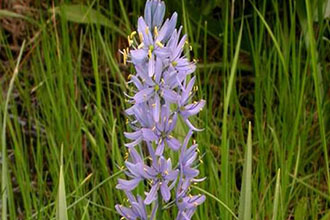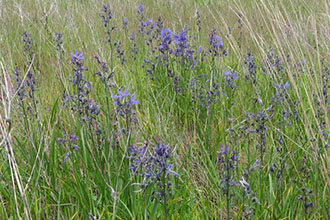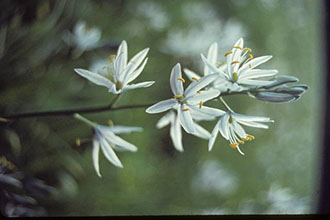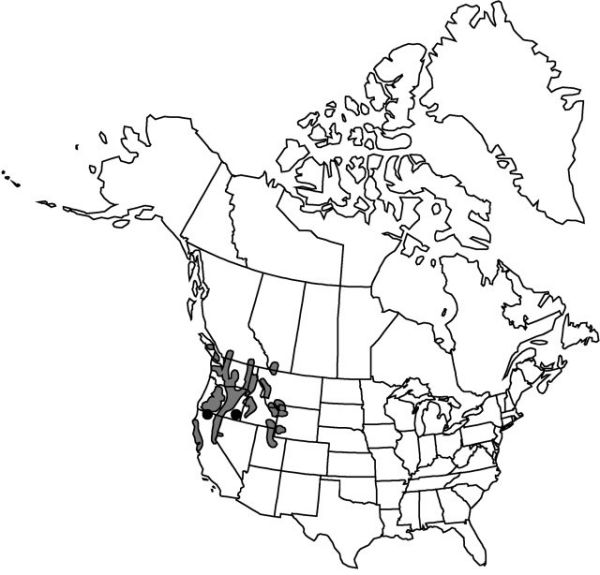USFS Plant Database
Common camas is a native perennial forb. Its peduncle is from 20-50 cm in height and supports a terminal raceme. The peduncle and basal leaves attach to a bulb that is up to 6 cm across. Its roots are fibrous.
The currently accepted scientific name of common camas is Camassia quamash (Pursh) Greene (Liliaceae).
Information about habitat and associated species.
In the Intermountain region and the northern Rocky Mountains, common camas is usually found in mountain grassland and prairie communities. West of the Cascade-Sierra Nevada crest, it occurs in both forest and grassland types...Common camas grows on sites that are moist to wet in spring but dry by late spring or summer. It is commonly found near vernal pools, springs, and intermittent streams...Common camas is shade intolerant. In forested areas, it is found on open sites created by disturbance. In grasslands and meadows, it is most prevalent in initial and early seral communities but also occurs in later seres.
Common camas bulbs were eaten by western Indians, trappers, and early settlers. Many western Indian tribes also used the bulbs as a trade item...Livestock, elk, moose, and caribou graze common camas. Pigs consume the bulbs. (Plant Database)



